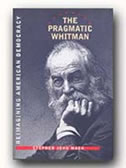October 30, 2006
Google Screws YouTube
And before the digital ink had dried--Goodbye YouTube.
Posted by stevemack at 02:42 PM | Comments (0) | TrackBack
October 27, 2006
Copyrights, Copy Wrongs
Whatever progressive reforms the Democrats may usher in after the November elections, you can pretty much bet that one of them won’t be a democratization of the increasingly oligarchic copyright law. As far as I can tell, it’s an issue on nobody’s radar screen. (And will likely stay that way unless they start going after YouTube—which they might, or might not.)
Too bad. Works of art, whether they take the form of fiction, film, painting, or what-have-you, are more than one owner’s intellectual “property.” They are the terms a society uses to define itself. Art tells us about our past, helps us settle on a meaning for the present, and enables us to imagine the future we wish to build. Through art, we crystallize our values, dramatize our failings, and orchestrate our hopes.
This special role art plays in a culture’s internal conversation complicates the very idea of ownership. Of course, artists are entitled to the commercial rewards of their work—but forever? Surely there needs to come a time when a work has become so successful, become so much a part of our common language, has integrated itself so fully with the way we think that we have a right to say “it’s ours.” Fitzgerald doesn’t own The Great Gatsby, we do. Hawthorne doesn’t own The Scarlet Letter, we do. And because we own them—and can reinterpret them in a thousand different ways—we’re able to talk about ourselves more deeply.
This point has been made often and elegantly by Larry Lessig and others. Moreover, they’ve offered some very useful answers with their Creative Commons. But as Lessig himself would likely acknowledge, his is only an attempt to ameliorate the ills of a deeply troubling, entrenched legal environment. There are two problems and they complicate each other: First, of course, there is the “duration” issue—the unsavory ways commercial interests have extended their monopolistic control over art, thus restricting the public’s ability to use the art in public debate. The second problem is complicated by the duration issue: “fair use.” If works of art could more quickly come into the public’s sphere, restrictions over its use would be less troublesome. But the fact that they are protected for so long creates profound political and moral problems.
Consider, for example, Blanch v. Koons, decided in November of last year and affirmed yesterday by Judge Sacks of the Second Circuit. The facts, as summarized by William Patry, are:
plaintiff, for $750 dollars, did an advertisement for Gucci silk sandals. The photo depcited a woman's lower legs and feet (wearing the silk sandals) resting on a man's lap in an airplane cabin. The photo appeared in a six-page feature in Allure magazine. Koons was commissioned by Deutsche Bank and the Guggenheim Museum to create a series of seven paintings, which he later called "Easyfun-Ethereal." One work, "Niagara," was at issue. In Niagara, Koons (or more accurately, perhaps, his "assistants") depicted several sets of women's lower legs juxtaposed against food and landscapes. He intended to "comment on the ways in which some of our most basic appetites -- for food, play, and sex -- are mediated by popular images. ... By reconceptualizing these fragments as I do, I try to compel the viewer to break out of the conventional way of experiencing a particular appetite as mediated by mass media." And Fox News is fair and balanced. Koons made good money on the project, but Blanch admitted Koons' use didn't harm her career, upset any plans she had for her work, or decrease its value.
What was at issue here, legally—but more important, politically as well—was not just the commercial ownership of the original work. It was the political significance of the original work. And its political significance is not unrelated to its commercial value. Indeed, Koons’ own work depended upon the commerical viability of Blanch’s work. In one sense, the commercial success of the original work made it an appropriate target for the critical reinterpretation.
In Patry’s commentary on the case, it seems reasonably clear that the law has evolved to accommodate just such concerns. And, indeed, the case was decided fairly. But this does not resolve the larger problem. How many advertisers, or studios, or music labels or media companies believe it is in their financial interest to protect their products from being reinterpreted for use as social criticism? Every one of them, I bet. And how many “struggling artists” have a legal team at their disposal—especially one ready to go up against those well financed commercial powerhouses? Few, I imagine.
Posted by stevemack at 04:39 PM | Comments (0) | TrackBack


